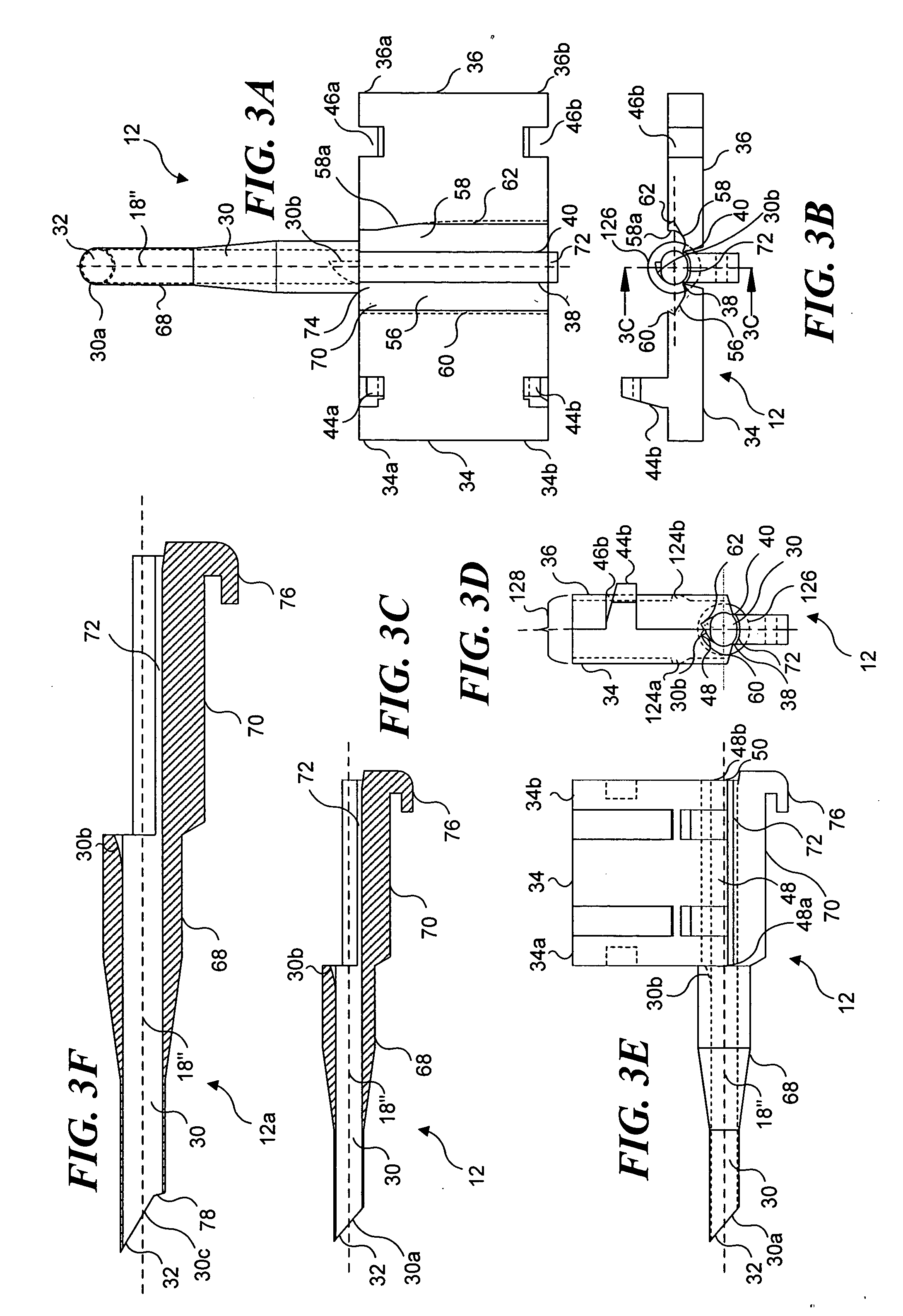Intraocular lens inserter system components
a technology of inserter system and push rod, which is applied in the field of ophthalmic devices, can solve the problems of deteriorating vision, affecting the ocular lens acclimatization, and patients given glasses to wear, and achieve the effect of preventing damage to the iol
- Summary
- Abstract
- Description
- Claims
- Application Information
AI Technical Summary
Benefits of technology
Problems solved by technology
Method used
Image
Examples
second embodiment
of Cartridge Housing
[0092]FIGS. 5A, 5B, 5C, and 5D illustrate the second of four preferred embodiments of yet another component of the present invention, a cartridge housing that is attached to the distal end of an IOL inserter, as shown in FIGS. 8B, and 8C and as shown prior to attachment in the exploded view of FIG. 8A.
[0093] As illustrated in FIG. 5A, cartridge housing 66b includes a distal end 80, a proximal end 82, a top portion 84, a base portion 86, a cartridge receiving opening 88, a housing push rod opening 50′, and a housing groove 90b. Cartridge receiving opening 88 is sized and disposed towards distal end 80 such that distal portion 68 of cartridges 12 or 12a may be inserted into cartridge receiving opening 88. (It will be understood in connection with the following discussion that cartridge 12a can be used instead of cartridge 12.) The cartridge housing encloses at least a portion of the cartridge. Also, the cartridge receiving opening 88 is sized such that the IOL car...
third embodiment
of Cartridge Housing
[0106]FIG. 9A, FIG. 9B, FIG. 9C, and FIG. 9D illustrate a cartridge housing 66c that can be attached to the distal end of IOL inserter 10c, as shown in FIG. 10B, and FIG. 10C, and as shown prior to attachment in FIG. 10A. Cartridge housing 66c is the third of four preferred embodiments of the cartridge housing.
[0107] Cartridge housing 66c is similar to the second embodiment of the cartridge housing, in that it also includes distal end 80, proximal end 82, top portion 84, base portion 86, cartridge receiving opening 88, housing push rod opening 50′, and housing groove 90b. In addition, cartridge housing 66c also includes a pivot point 96 disposed approximately midway between the top portion and the base portion of the distal end of cartridge housing 66c, so that the IOL cartridge is pivotal within the cartridge receiving opening. In addition, FIG. 9A illustrates a first opening 92c that is disposed on the outer surface of the cartridge housing between the top por...
fourth embodiment
of Cartridge Housing
[0111]FIGS. 11A, 11B, 11C, and 11D illustrate the fourth preferred embodiment of a cartridge housing 66d that can be attached to the distal end of IOL inserter 10d, as shown in FIGS. 12A, 12B, and 12C. Like the second and third embodiments of the cartridge housing, cartridge housing 66d includes distal end 80, proximal end 82, top portion 84, base portion 86, cartridge receiving opening 88, housing push rod opening 50′, housing groove 90b, pivot point 96, and first opening 92c. However, in order to provide for a better position for use by an ocular surgeon, cartridge housing 66d is configured to be attached to an IOL inserter such that it forms a desired angle relative to cartridge housing 66d. The method of attaching cartridge housing 66d to inserter 10d as shown in FIG. 12B is the substantially the same as that used for attaching cartridge housing 66c to inserter 10c. However, although cartridge housing 66d and IOL cartridge 12 are disposed in a seated position...
PUM
 Login to View More
Login to View More Abstract
Description
Claims
Application Information
 Login to View More
Login to View More - R&D
- Intellectual Property
- Life Sciences
- Materials
- Tech Scout
- Unparalleled Data Quality
- Higher Quality Content
- 60% Fewer Hallucinations
Browse by: Latest US Patents, China's latest patents, Technical Efficacy Thesaurus, Application Domain, Technology Topic, Popular Technical Reports.
© 2025 PatSnap. All rights reserved.Legal|Privacy policy|Modern Slavery Act Transparency Statement|Sitemap|About US| Contact US: help@patsnap.com



